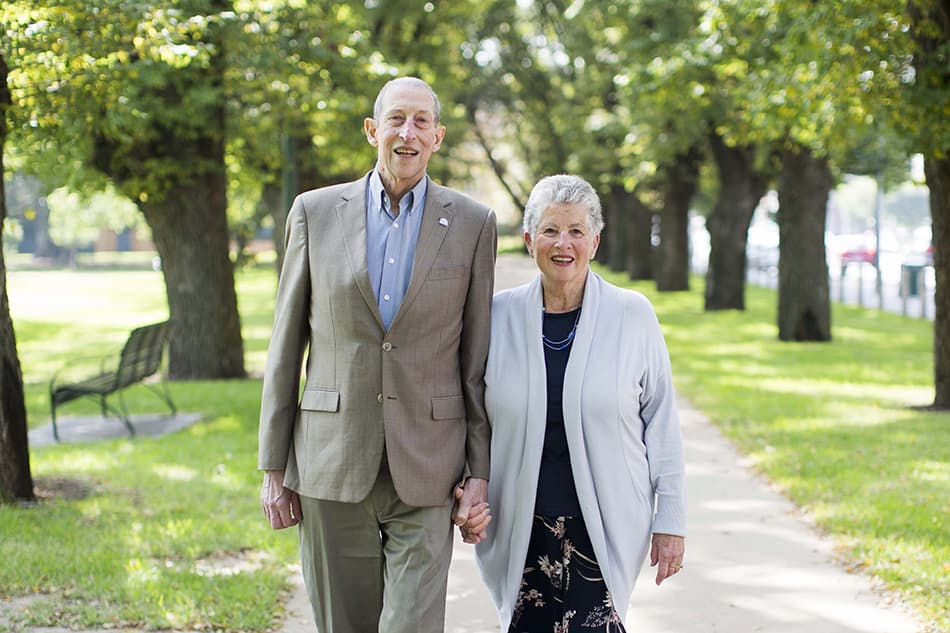“You come back, and you get back into life” – that’s how Patrick lives with two lymphomas
Patrick Devine has two extraordinary physical aims – to walk the 10 kilometres from Melbourne Central to Camberwell where he lives, and to swim 200 metres butterfly!
Extraordinary, because this time last year he couldn’t walk or talk after miraculously surviving a sepsis infection that saw him spend 11 weeks in hospital, 27 days unconscious in ICU, and 15 days on a ventilator.
“My wife was told many times to say her goodbyes,” said Patrick, 73.
The recently retired pharmacist is living with two different types of incurable lymphoma. Sézary Syndrome (SS), an aggressive form of cutaneous T-cell lymphoma which he’s had for 10 years, and since mid-2018 he’s also had Waldenström’s macroglobulinaemia (WM), a B-cell lymphoma.
“I live with cancer, accept the best treatment available and live in the best way that my body will allow.”
That’s Patrick’s philosophy and it steers him through the dramas and traumas inherent in having blood cancer so he can get on with and appreciate “a very ordinary life”.
When he spoke to Lymphoma News, the COVID-19 restrictions in Melbourne was the only thing holding him back from reaching his two goals.
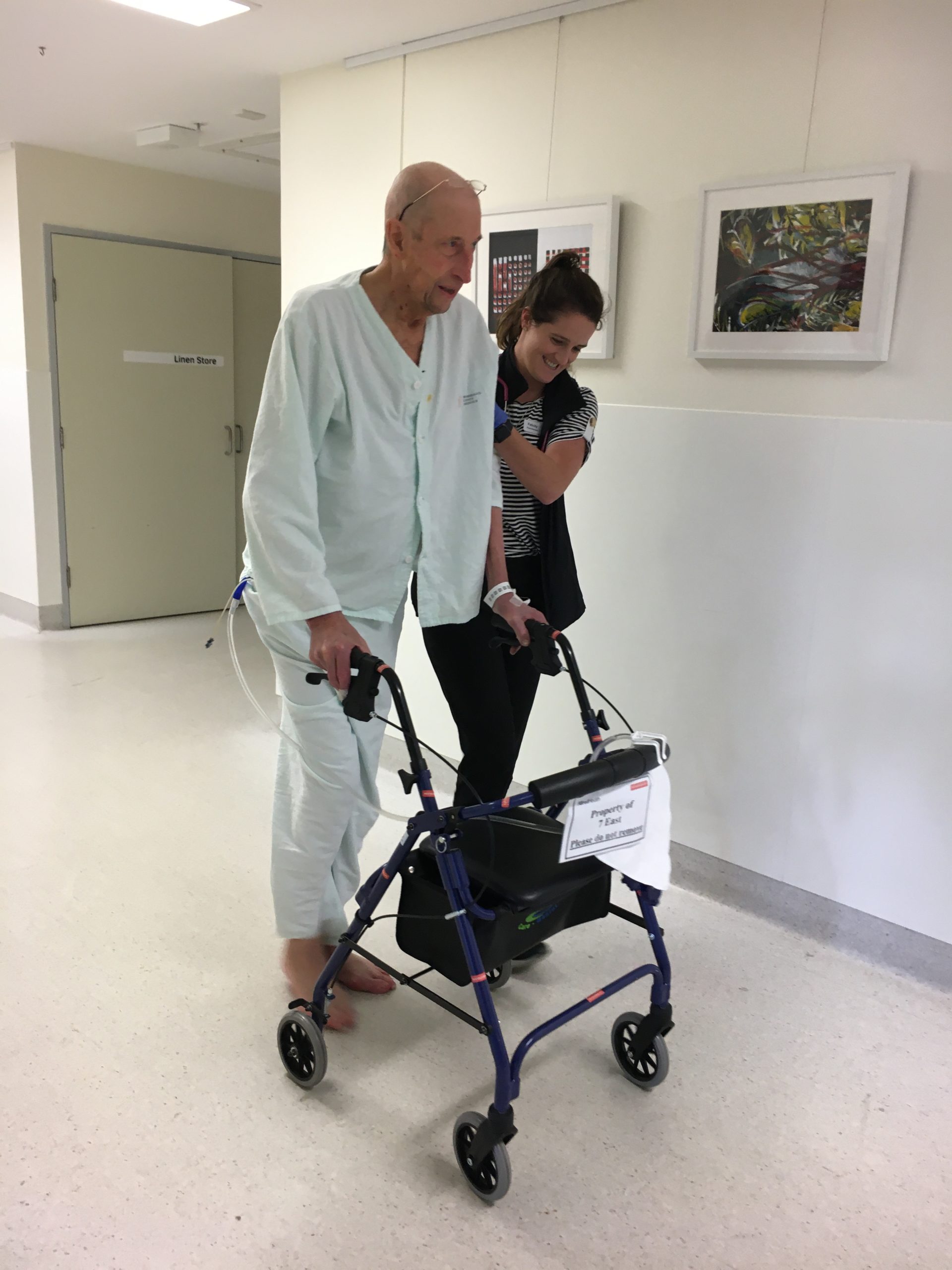
Sézary Syndrome – diagnosis and treatment
While Patrick’s diagnosis with SS was in November 2010, he says the condition began 15 years earlier, when he started having skin rashes.
“Skin rashes can be eczema or psoriasis, but in the case of Sézary a cancer forms in the body which manifests itself in the skin and affects the lymph nodes and blood,” he explained.
“Initially it appears like eczema, but the skin can get covered with patches, plaques and tumours. When or if the skin gets broken, you become very susceptible to infection,” explained Patrick, a competitively successful swimmer for most of his life, who has spent a lot of time in the pool.
“In the last year [2009] before diagnosis, I was training quite a lot and my skin got worse and worse. I got a secondary infection over this eczema-looking rash and went to the doctor.”
After a blood test, his GP called that night saying his white blood cells were “off the scale” and the haematology registrar at a Melbourne hospital was waiting for him.
Patrick spent the next four days in hospital having tests, treatment for his skin infection, and he was diagnosed with SS – a rare condition that while incurable is treatable.
He was treated with extracorporeal photopheresis, which enhances the immune system and helps it cope with the SS. It requires access to a machine that takes blood out of the body, treats it with ultraviolet light, then returns the blood to the body.
The availability of some treatments, such as extracorporeal photopheresis (ECP), is not widespread, said Patrick who is concerned about people with rare cancers who live in remote areas.
“The rarer the cancer, the more difficult it is for treatment to be available at all major hospitals and to have specialists familiar with state-of-the-art knowledge and facilities to treat those cancers.
“Extracorporeal photopheresis is available in Melbourne, but at the time I had it, it wasn’t available in Sydney and is still not available in most other major centres today.”
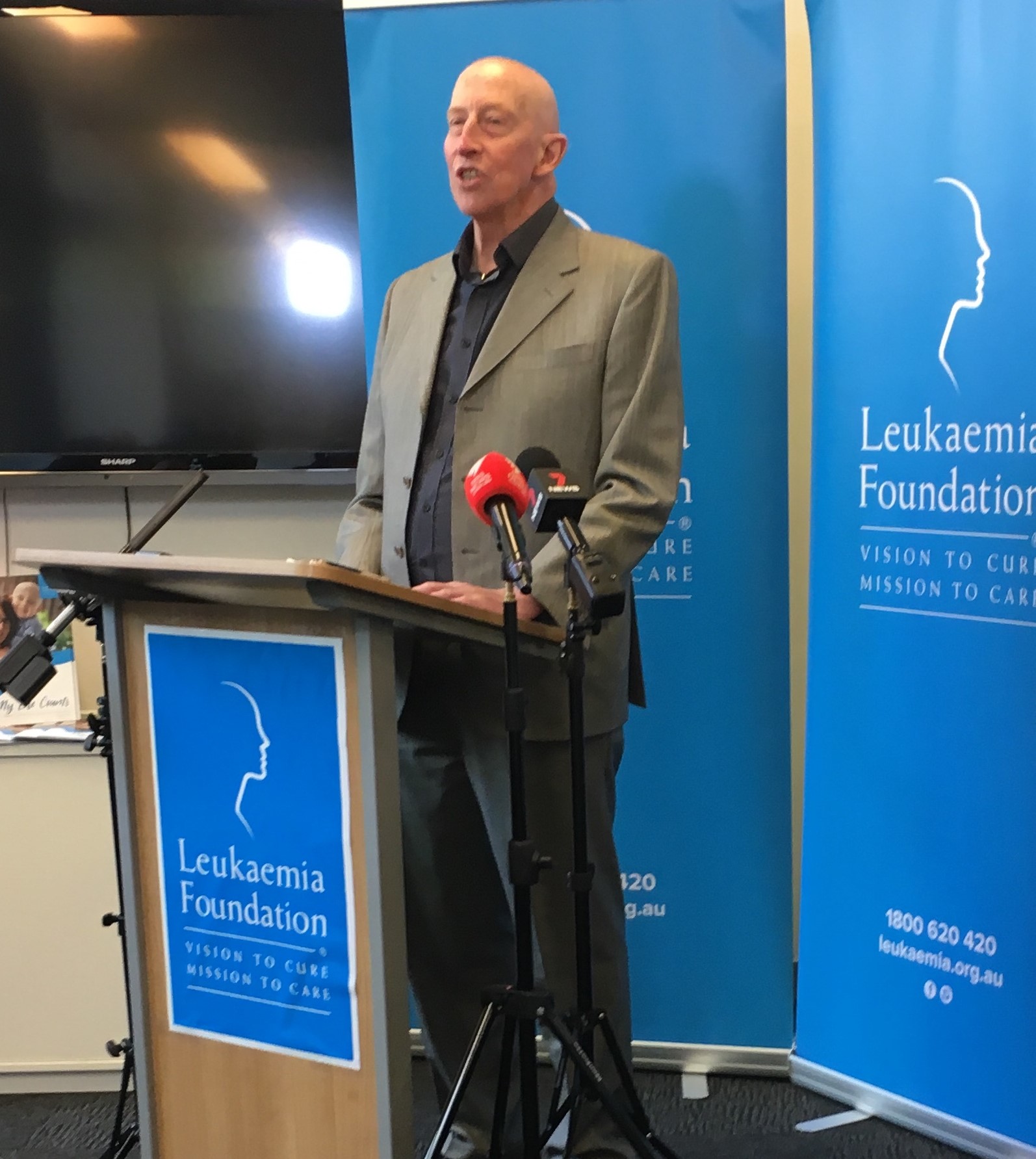
Next – a clinical trial for brentuximab vedotin
The ECP treatment “loses its potency after a while” so when an international clinical trial testing the drug brentuximab vedotin (Adcetris®) became available in 2015, Patrick participated. He was randomly assigned to the other arm of the trial and the treatment he received was bexarotene.
“When I wasn’t responding, they graciously transferred me to the brentuximab arm and I responded well to that,” said Patrick.
“Sezary syndrome is caused by a mutation in the genes and brentuximab is a monoclonal antibody designed to destroy specific proteins in the cancer cell.
“I was one of the few patients in the trial that could sustain the full dose – an infusion every three weeks for the 45 weeks of the trial.”
Patrick’s rashes responded “very very well” to the brentuximab and his lymph nodes “reduced in size and are fine”. But he got severe peripheral neuropathy and this side-effect made it difficult for him to walk, hold things, and he had a lot of gastrointestinal symptoms.
“So it wasn’t comfortable, but at the same time you could say it [brentuximab] saved my life,” said Patrick.
Over the following 18 months, he gradually got better and during this time he could swim more easily than he could walk, and he continued to swim competitively*.
He was drug-free after the trial and gradually his peripheral neuropathy improved, assisted by a series of gentle exercises and weights.
A second lymphoma diagnosis
Then, in June 2018, Patrick got another lymphoma, WM, which, astoundingly, he said “was fine”.
“I’m a pharmacist and I’ve worked with people with cancer all my life. I’ve counselled them, I’ve seen them die. I’ve made friends with them and many have continued living, and I’ve admired the way they have travelled their journeys.”
“You take what strengths you have, work out the best way to live, get the best treatment you can, and accept the result.”
“Emotion coming into it doesn’t help, does it?” he added.
Patrick’s treatment for WM was a combination of two drugs, rituximab (MabThera®) and bendamustine (Ribomustin®). He was to have six doses, but after the fifth he developed sepsis (septicaemia) and ended up in hospital.
“I completely lost all my motor skills and came out weakened by it, but I got back into life straight away, in the best way that I could manage,” said Patrick.
“I couldn’t walk well but I got back into swimming 3-4 km a week and coaching swimming, and I was working as a consultant pharmacist, part-time, which I’d done since 2015,” said Patrick.
But he no longer swam competitively: “My last serious competition was in 2017”.
The WM has since been “behaving itself well”, but in February 2019 his SS was “coming back” and the decision was made for Patrick to have total body electron beam radiation; 21 sessions in July and August plus other appointments.
“It was fairly intensive in terms of time and this is where public transport was important because I live near a station and the thing is… parking at hospitals in incredibly expensive,” said Patrick.
Despite his weakened immune system, Patrick doesn’t hesitate to catch public transport to his medical appointments and treatment, but he’s “fairly careful”. Using it is a statement of living a normal life.
“Even though your immune system is compromised, you still have to expose yourself to society,” he said.
“I don’t have fear. Fear is not a thing that helps.”
In October last year, Patrick, who is an active member of a car club, displayed his car [a 1956 Mercedes 300 SL that he restored from a wreck] at the Motorclassica exhibition in Melbourne.
“I was there for three days, talking to people from all over the world.”
The next day, Patrick and his wife, Ros, celebrated their 50th wedding anniversary, and only three days later he collapsed, and Ros called an ambulance. By the time he got to Emergency, he had lost consciousness.
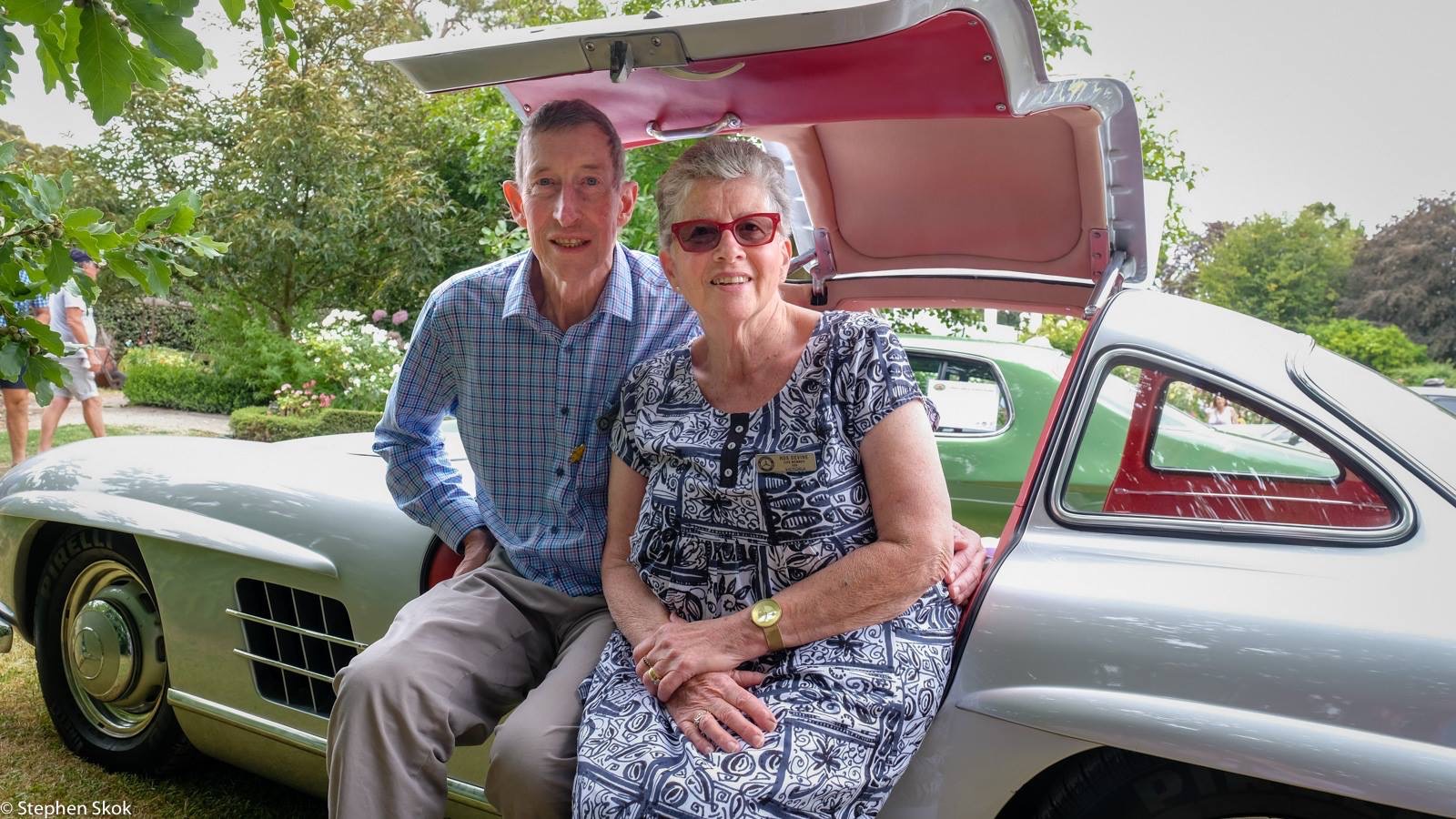
A second near-death brush with sepsis
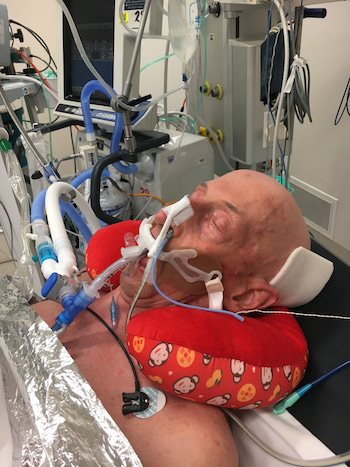
This was his second sepsis episode. He was ventilated, his heart, lungs, kidneys and liver collapsed, and Ros was told, “sorry, he’s not going to make it, say your goodbyes”.
Patrick had no idea what a dire situation he had been in until he became semi-conscious and Ros said, “hey, it’s November”. All sorts of things had happened, which he had no knowledge of including Melbourne Cup.
He was moved to the palliative ward.
“The thing was, I was sent up there to die, and Ros was rearranging the house so they could put a hospital bed in our bedroom, because I may have ended up dying at home.”
One day, during the three weeks Patrick spent in the palliative ward, a doctor noticed he had produced a “thimble full of urine”, the colour of shiraz wine.
“And I noticed a tiny little bit of excitement in his voice… things were just starting to work,” said Patrick.
Gradually, over many weeks, Patrick’s systems started to recover and he was moved to a rehabilitation hospital.
Having big lungs, from a lifetime of swimming, was “probably the reason I survived”, he said, along with Ros’ unending support, and “an amazing group of people with different skills and abilities” who saw him throughout this period.
Getting back into life
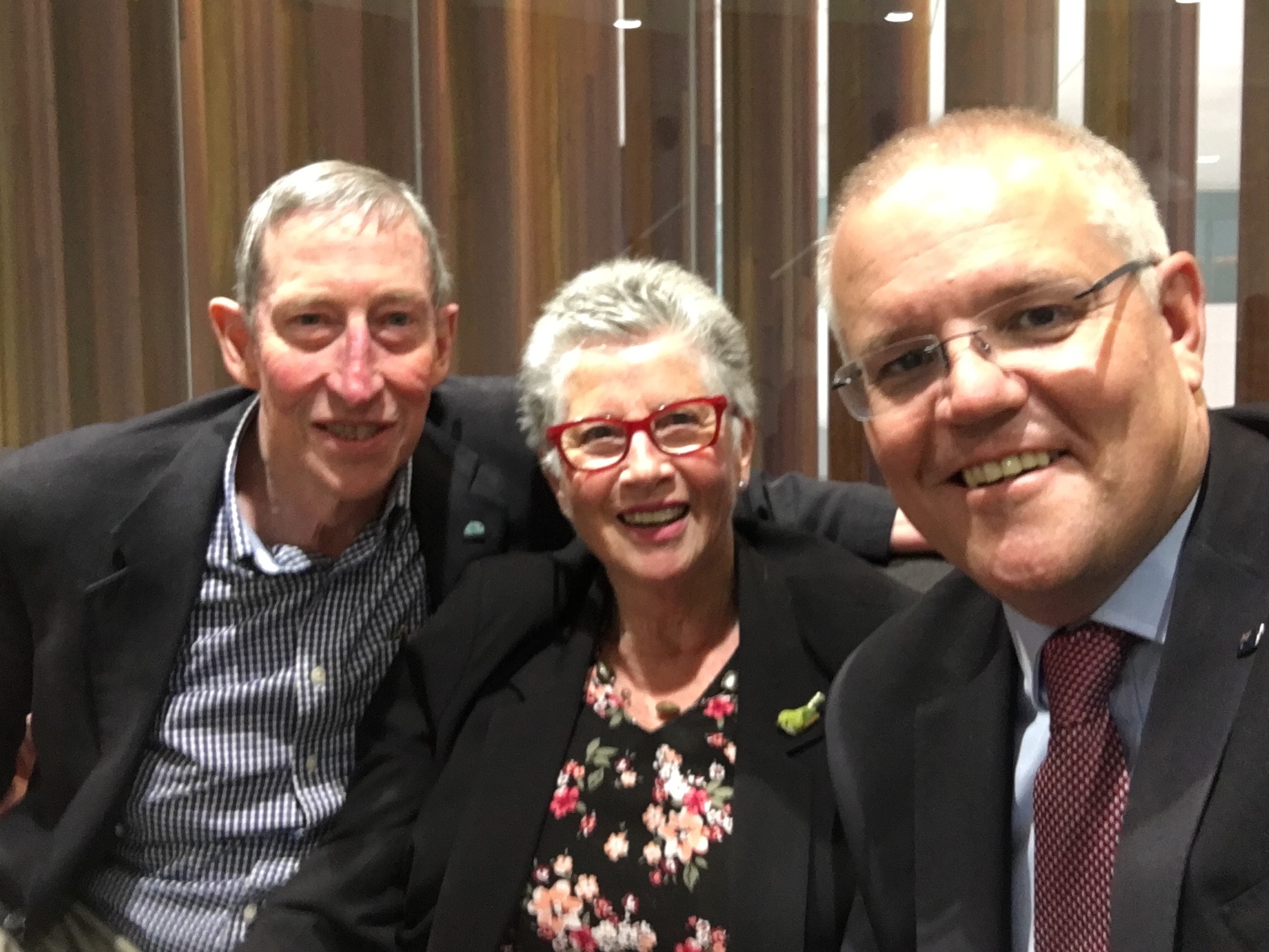
He left rehab on January 3 and went home with a wheelchair, walker and shower stool, “but I never used any of them”. By February, Patrick was “reasonably active” and took his car to a garage day and two exhibitions.
But he did find it “very hard” to walk the gentle 15m slope, from his car to the backdoor.
“One day I even crawled,” said Patrick.
“I also crawled around house and tried to sing.
“This was my idea. It was very hard for me to stand up. Crawling is very good as a limb coordination exercise and it was something I could do with the state of my body.
“I mixed crawling with walking, and I tried to sing, for my lungs.
“Even now my speech is not quite what I would like it to be, because my tongue was damaged from the ventilation tubes,” said Patrick, who speaks slowly, and very clearly.
“Sometimes, if I speak quickly, I’ll start one word, then say another word because the tongue has gone into the wrong sequence.
“But I’m back to where I chaired a Zoom meeting in September for the annual meeting of my car club with 204 members.”
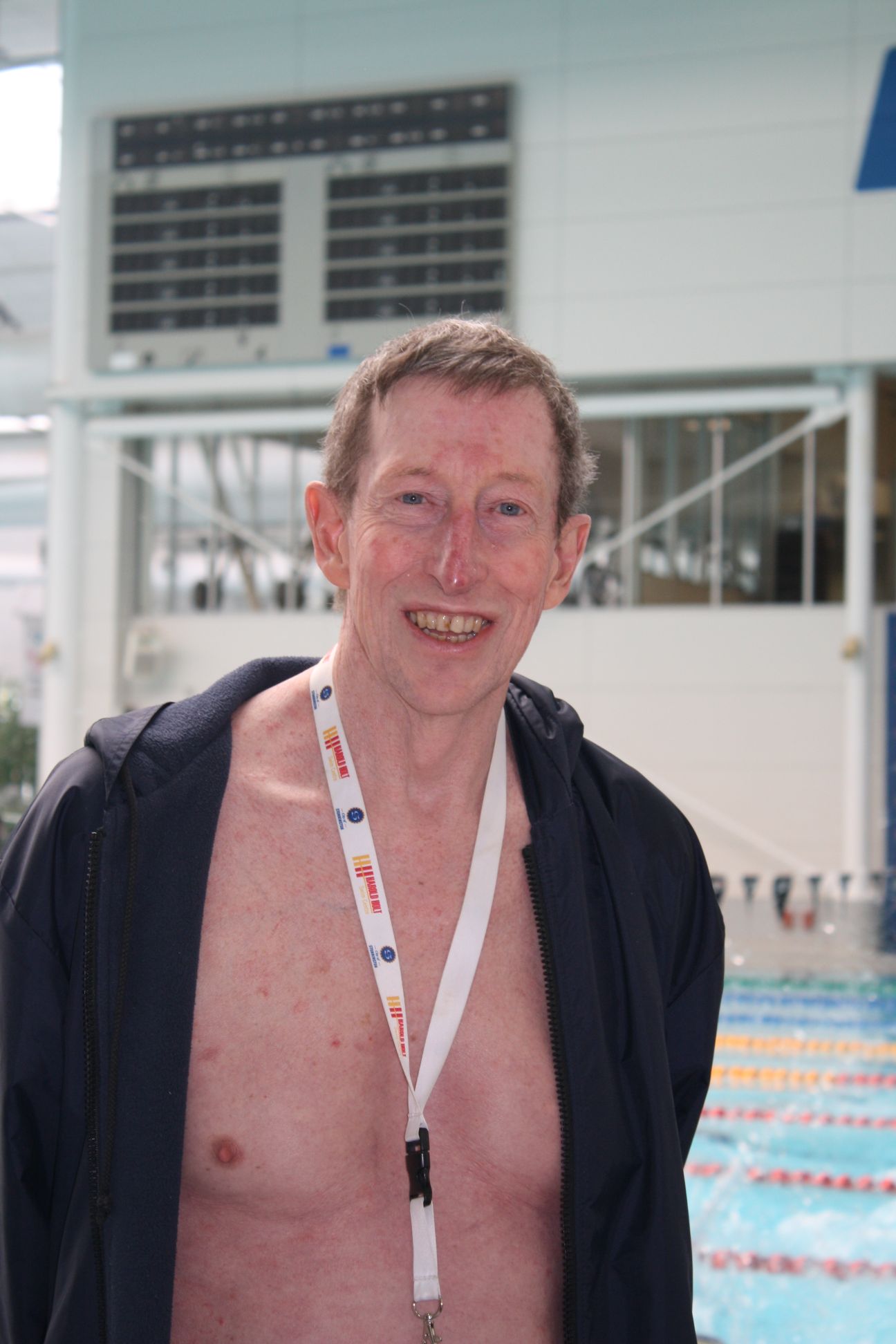
Patrick’s two physical aims
“Eventually, I’ve rebuilt. I can now walk several kilometres and I have two physical aims at present.”
But there are a couple of caveats, thanks to COVID-19.
“I want to do the walk before it gets too hot. Ros will come along as a support team, but at present we have a five-kilometre radius in Melbourne that we’re not allowed to go outside.
“And the pools have been locked down and I haven’t been able to book a swim yet,” said Patrick when he spoke to Lymphoma News in early-October.
“Of course, it will take me a while to work up to the 200m butterfly.”
And there’s another “thing”.
“My Sezary isn’t going very well and I’m back on brentuximab,” said Patrick. He had just had his fourth dose, with another 12 infusions to go.
So he also wants to do both his walk and swim before he builds up too much peripheral neuropathy – a cumulative side-effect of this treatment.
PBS listing of brentuximab
Back in April 2018, when brentuximab vedotin was approved by the Pharmaceutical Benefits Committee (PBAC) to be funded on the Pharmaceutical Benefits Scheme (PBS), Patrick was involved in the announcement with the Minister for Health, Greg Hunt.
At that time a course of brentuximab treatment cost $300,000.
“It’s hugely expensive and I’m forever grateful to the Australian taxpayers who pay for that to keep me alive,” said Patrick who is an avid consumer advocate for blood cancer.
A few days after the PBAC announcement Patrick was asked to meet the Prime Minister.
“We talked about brentuximab and I gave him a letter outlining the difficulties of people who live in remote areas and have a rare lymphoma or leukaemia,” he said.
That’s Patrick’s biggest advocacy concern and his passion – how those people manage, from being diagnosed by their GP, to accessing treatment, and the role of the various state-based health jurisdictions.
He was actively involved in the launch by the Leukaemia Foundation and the Australian government of the Blood Cancer Taskforce last year and the National Action Plan that was released in September, and more recently, he advocated for another expensive cutaneous lymphoma drug, mogamulizumab, to be recommended by the PBAC for listing on the PBS.
Enjoying the “nice things of now”
“I don’t know what will happen when this cycle of brentuximab stops working. I’ve got 12 more treatments, and it’ll sustain me for a while, but I’d like to live well into my 80s or 90s,” said Patrick.
He doesn’t worry too much about the future though, “because worry stops you enjoying the nice things of now”.
“So, I’ll enjoy my swim. I know how weak I’ll be, but it’ll still be fun.“
Exactly 12 months after being admitted to ICU, on October 19, 2020, Patrick had his first swim since then of one kilometre.
“And the next time the car club has something, it will be nice to go on it. And I’ve got motoring articles to write [for the club magazine that Patrick edits].
“Believe it or not, I don’t mind having the lymphomas at all. The things that are fantastic in normal life – they’re absolutely garnished, garnished more than you could ever imagine. They become much more important.
“What happens… you appreciate the finest and the nicest things and sometimes the very ordinary things. They just become more highlighted in your life.
“There are certain traumas that have happened and it’s quite amazing that I’ve got through them. You have to put those bits aside and just be completely normal,” said Patrick.
* Patrick, who started swimming at 11, has broken four Australian records in Australian swimming championships and has many gold medals amongst his trophies for Royal Life Saving. He started competing in Masters’ competitions at the age of 50 and has eight gold medals in international lifesaving and three golds swimming at international level. “The second year after I was diagnosed, which was 2011, I could still make the top 10 in the world in Masters’ swimming in my age group,” said Patrick.
Last updated on January 18th, 2023
Developed by the Leukaemia Foundation in consultation with people living with a blood cancer, Leukaemia Foundation support staff, haematology nursing staff and/or Australian clinical haematologists. This content is provided for information purposes only and we urge you to always seek advice from a registered health care professional for diagnosis, treatment and answers to your medical questions, including the suitability of a particular therapy, service, product or treatment in your circumstances. The Leukaemia Foundation shall not bear any liability for any person relying on the materials contained on this website.